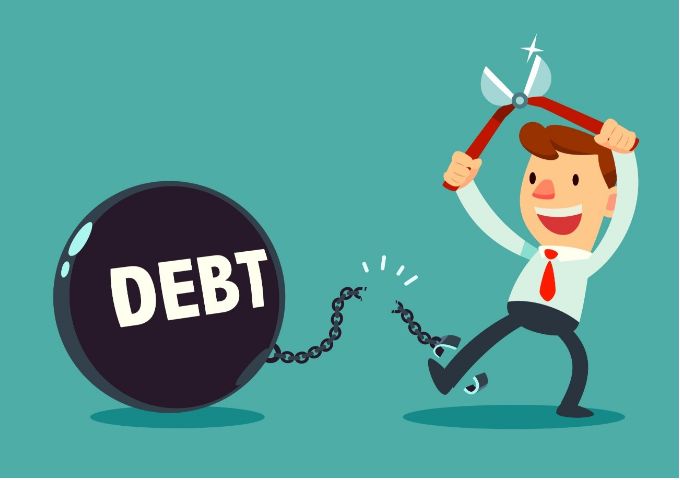This One-Page Retirement Plan Can Change Your Retirement
Can You Really Fit an Entire Retirement Plan on One Page?
Can you really fit an entire retirement plan onto one page? And would it even be that helpful? Well, we’ve created hundreds of one-page retirement plans and given them to our clients, increasing their confidence and peace of mind to retire and truly start living life to the fullest. Not too long ago, Shan created a one-page plan for a client, and immediately after their meeting, the client called up his boss and let him know the date he would retire. While that doesn’t happen frequently, another person, who was not a client but we were showing them the one-page plan, said during the meeting, “I’ve gotten more value from this one page than the previous 15 years working with my current adviser.” So, yes, it is useful and worth understanding.
The Benefits of a One-Page Plan
Today, we’re going to go over the essential elements of a one-page plan, what to avoid when creating it, and how to create one yourself. One of the significant benefits of a one-page plan is that it makes taking the next step more actionable and less intimidating, leading to a more successful retirement and planning process. One big myth in the financial world is that complexity equals better. But after doing this for over a decade and a half, we’ve found that’s just not true.
Avoiding Complexity in Financial Planning
Many people come to us for an update on their plan and bring a 50-page binder. We often ask, “When was the last time you reviewed this?” The usual response is, “Probably when we got it from our adviser three years ago, but it’s been sitting in a file cabinet since.” Proper financial management isn’t a “set it and forget it” endeavor. Life changes, events happen, and financial plans need to adapt accordingly. The best retirement plans are adaptable and can change as life changes. The one-page plan acts as a compass, guiding you through those changes.
Adapting to Life Changes
Imagine a year from now you have an opportunity to do something exciting that requires money. But, let’s pretend the economy isn’t in a great spot, or your account values are down compared to where they are today. You might hesitate to spend that money. Think back to 2008, when people were shoring up their finances and cutting back. With a one-page plan, instead of pulling out a 50-page binder, you pull out that single page and remind yourself of your top values, like family or big trips. You can remember that you created this account for a purpose, which might be to fund those trips, giving you the confidence to move forward.
The Essential Areas of a One-Page Plan
Let’s go over the essential parts of a one-page plan. At the bottom are the three crucial areas you need to get right in the beginning stages of retirement planning:
- Income Plan: This is where it all starts.
- Investment Plan: This plan is only decided after the income plan is figured out.
- Tax Plan: This impacts all parts of your retirement planning.
If you can focus on these three areas first, you’re off to a great start. Many other areas of retirement planning, like estate or legacy planning, insurance, protection, charitable endeavors, and medical coverage, are important too. But these three areas form the foundation. Once you get them right, you can build from there.
Aligning Money with Values
Now, I want to show you the top part of the plan, which I like to call the “secret sauce.” The important question here is: Why? Why are we even planning in the first place? Is it to feel secure or more confident about the future? Those are valid reasons, but there’s often more. There are values unique to you that others may not share.
For example, one client values growing her church community. She and her husband will spend part of their week involved in church activities and have budgeted for giving to the church. Another client values flying planes and spends his time with a group of pilots. These values differ from what interests me, but once we can identify what’s most important to you, aligning your money with your values makes financial decisions easier.
Setting Tangible Goals
After understanding your values, the next step is identifying tangible goals. Retirement is often the main goal for many of our clients, usually with a specific monthly income target. Other goals might include downsizing or moving to a different state. These goals require money and planning to achieve, and it’s essential to map them out because many of them will fit into your income plan. For instance, if you’re considering selling a house or making a significant one-time purchase, understanding how those decisions impact the next 30 years of your plan will bring peace of mind.
Addressing What-If Scenarios
What-if scenarios help you understand the implications of significant financial decisions before you make them. For example, if you sell your house and move or take a big trip, you can see how these decisions affect your accounts and financial security over time. The purpose of money is not just to accumulate it but to use it wisely on things that matter to you.
Identifying Risks and Mitigating Roadblocks
Once you get clear on what’s important and identify your goals, the next step is reviewing your plan to identify risks or roadblocks that could get in the way. This requires more in-depth analysis. After figuring this out, we look at the income plan, investment review, and the biggest risks that could impact your plan. Once we identify those risks, we can come up with solutions.
For example, we might look at your current asset allocation and adjust for inflationary periods or prepare for various economic conditions. Identifying these risks helps create a plan that can weather different scenarios and gives you the flexibility to adapt.
Addressing Identity in Retirement
An often overlooked aspect of retirement is identity. After working for decades, many people find that their job provides a sense of identity. When that’s gone, it can be a big shift. A real retirement plan looks beyond the financials and addresses the areas of faith, fitness, fun, family, and friends. Finding fulfillment in retirement requires blending the financial plan with these personal values.
How to Create Your One-Page Plan
So, how can you create a one-page plan yourself?
- Start by Reading: Read the first three chapters of The One-Page Financial Plan by Carl Richards. This can help you get started on aligning your money with your values. Richards might even offer the first few chapters for free on his website.
- Use Planning Software: Use planning software like the New Retirement Planner to explore “what-if” scenarios and get a clearer picture of how your plan would work in different situations.
- Work with a Retirement Specialist: If your current adviser focuses primarily on investments and not the broader aspects of retirement, you could reach out to us for help in creating a one-page plan.
- Join Our Email List: Join our email list for ongoing insights. We frequently send out helpful tips and questions to ponder as you approach retirement.
Thank you for reading, and I hope you found this helpful!









